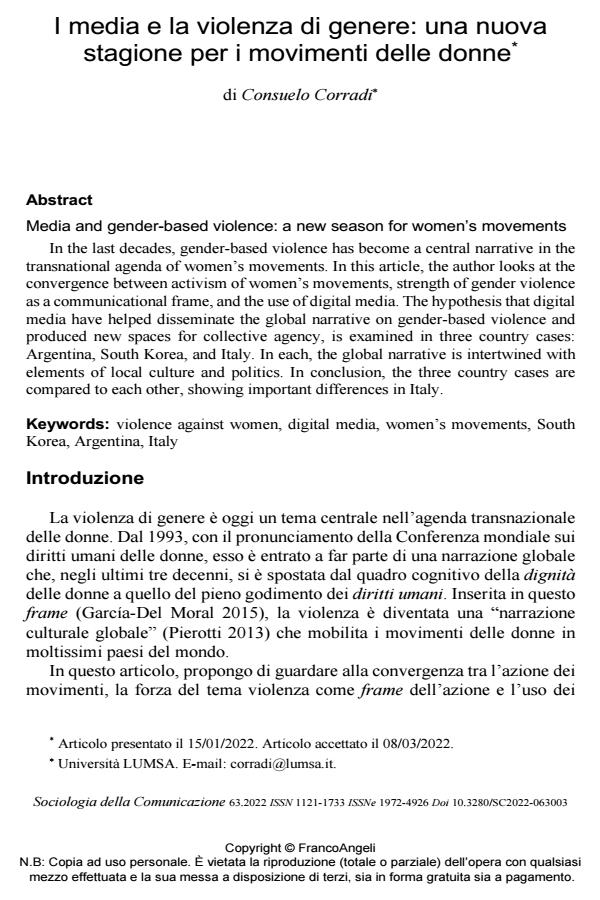Media and gender-based violence: a new season for women’s movements
Journal title SOCIOLOGIA DELLA COMUNICAZIONE
Author/s Consuelo Corradi
Publishing Year 2022 Issue 2022/63
Language Italian Pages 14 P. 44-57 File size 324 KB
DOI 10.3280/SC2022-063003
DOI is like a bar code for intellectual property: to have more infomation
click here
Below, you can see the article first page
If you want to buy this article in PDF format, you can do it, following the instructions to buy download credits

FrancoAngeli is member of Publishers International Linking Association, Inc (PILA), a not-for-profit association which run the CrossRef service enabling links to and from online scholarly content.
In the last decades, gender-based violence has become a central narrative in the transnational agenda of women’s movements. In this article, the author looks at the convergence between activism of women’s movements, strength of gender violence as a communicational frame, and the use of digital media. The hypothesis that digital media have helped disseminate the global narrative on gender-based violence and produced new spaces for collective agency, is examined in three country cases: Argentina, South Korea, and Italy. In each, the global narrative is intertwined with elements of local culture and politics. In conclusion, the three country cases are compared to each other, showing important differences in Italy.
Keywords: violence against women, digital media, women’s movements, South Korea, Argentina, Italy
Consuelo Corradi, I media e la violenza di genere: una nuova stagione per i movimenti delle donne in "SOCIOLOGIA DELLA COMUNICAZIONE " 63/2022, pp 44-57, DOI: 10.3280/SC2022-063003